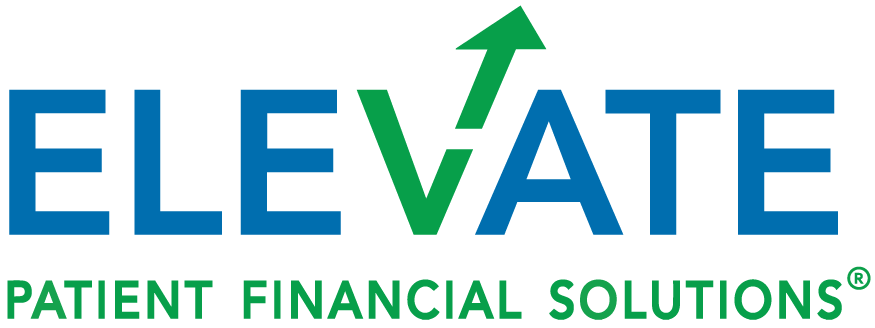Rise in Self-Pay Requires Providers to Improve their Reimbursement Strategies
As health care costs continue to grow so do the popularity of high deductible health plans (HDHP), with more than half of all U.S. workers now using one.1 The plans, designed to reduce unnecessary health care spending, encourage enrollees to actively manage their health care costs. Different from a traditional insurance plan, the monthly premium with a HDHP is lower, but enrollees pay more health care costs in a higher deductible before the insurance company starts to pay its share. Due to their widespread use, patients are shouldering more of the financial responsibility for their medical care, and this is increasing bad debt for healthcare providers.
Since 2000, the patient’s portion of healthcare payments has risen 30%. Today, that amount makes up 35% of provider revenue. Self-pay is the third largest payer behind Medicare and Medicaid.2 In 2022, nearly a third of covered workers were in HDHPs with deductibles of $2,000 or more, compared to 7% in 2009.3
While patients without insurance have greater access to charity care and other forms of financial assistance, the increased number of HDHPs has changed what it means to have health insurance coverage. For most hospitals, the change means they must collect more from the patient. Since patients in these plans must pay more, it leaves providers struggling to collect from them.
In 2021, the self-pay market was valued at $8 billion and is expected to hit $15 billion by 2027.4 Patient collection rates at hospitals have declined and the percentage of bad debt has been shown to increase when a patient’s out-of-pocket bills reaches $7,500. According to a Crowe Revenue Cycle Analytics report, after the patient responsibility portion reaches thousands of dollars, collectability sharply drops off.5
Data in the Crowe report uncovered trends that place a greater burden on providers’ ability to collect from self-pay patients. And as labor shortages and higher wages create a struggle for hospitals, an inability to recover all expected revenue further challenges slim operating margins. One of the biggest challenges is write-offs associated with patient balances after collection efforts by the provider. In the past, most of the bad debt was attributed to uninsured patients. Now it is most associated with patients with insurance. Self-pay after insurance accounts for nearly 60% of patient bad debt.5
This evolving landscape means healthcare providers will need to adjust their collection strategies to reflect this change. These approaches include improving communication with patients, so it’s tailored to how they prefer to receive messages. Patient-friendly language that is clear and concise, and the use of a variety of communication channels, including text messages, phone calls, and letters, help patients remember and understand information. Compassionate advocates who engage with patients through dignity and respect are also key to helping patients understand their medical bills and insurance options. Additionally, providing a self-service option and payment plans offer patients more options to pay when it’s most convenient for them. Providers have an opportunity to succeed in this environment, whether they choose to keep their Self-Pay collection services in-house or outsource them to a vendor with the right expertise, processes, and technology solutions, to better address patient satisfaction, reduce revenue loss, and improve collections.
About Elevate Patient Financial Solutions®
Elevate Patient Financial Solutions® is a proven RCM partner who provides a range of services, including Self-Pay, Eligibility & Disability Enrollment, Complex Claims Services, including Third Party Liability, Workers’ Compensation, Veterans Affairs, COB Denials, and Out-of-State Eligibility, and A/R Services, including High and Low Balance A/R projects, Zero Balance Payment Recovery, Legacy Receivables and Extended Business Office engagements.
As a strategic partner with more than four decades of experience serving hospitals and health systems across the nation, ElevatePFS delivers greater revenue recovery and an elevated client and patient experience. Recently, the company’s comprehensive Self-Pay solution significantly increased collections for a client, exceeding performance goals by 20% and enabling the organization to improve results with their existing billing process. Read our latest Self-Pay case study.
Resources
- Value Penguin, “Rate of Workers Enrolled in High-Deductible Health Plans Jumps for 8th Year in Row to Record 55.7%,” Jacqueline DeMarco, January 30, 2023. https://www.valuepenguin.com/high-deductible-health-plan-study
- Definitive Healthcare, “Healthcare Insights,” July 14, 2023. https://www.definitivehc.com/resources/healthcare-insights/breaking-down-us-hospital-payor-mixes
- KFF, “2022 Employer Health Benefits Survey,” October 27, 2022. https://www.kff.org/report-section/ehbs-2022-summary-of-findings/
- Pitchbook, “Pitchbook Analyst Note: Creating a Consumer-Centric Patient Payment Ecosystem,” April 27, 2021. https://pitchbook.com/news/reports/q2-2021-pitchbook-analyst-note-creating-a-consumer-centric-patient-payment-ecosystem
- Crowe, “Hospital collection rates for self-pay patient accounts,” August 2022. https://www.crowe.com/-/media/crowe/llp/widen-media-files-folder/h/hospital-collection-rates-for-self-pay-patient-accounts-report-chc2305-001a.pdf

